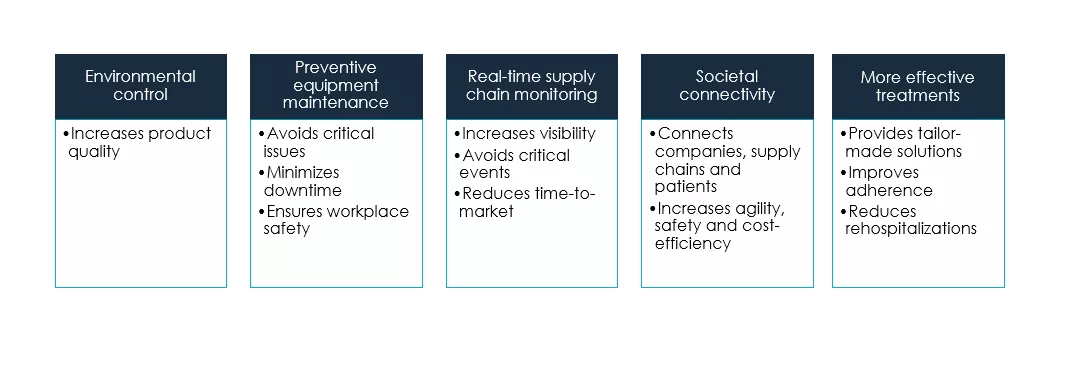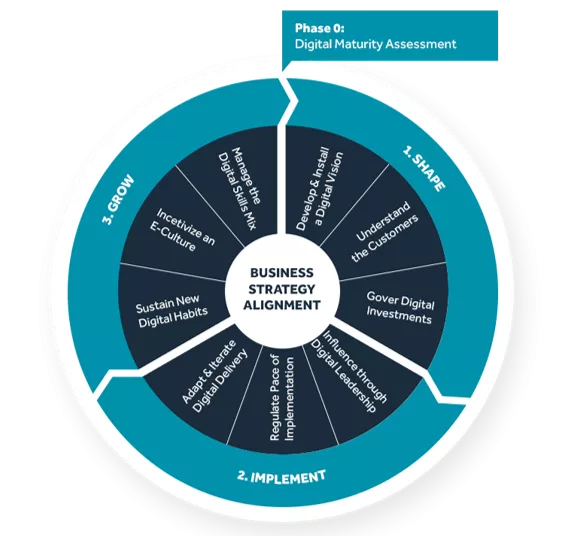The Internet of Things in the Pharmaceutical Industry
Efficiency through connectivity
The introduction of the internet has drastically changed many aspects of society. In the last two decades, the internet has become more widely available, internet-related technologies have developed immensely and its implementation costs are decreasing rapidly. This development has ushered in an era of industrial digitalization and automation.
At the same time, more devices and machinery have been created with inter-connectable and intercommunicable capabilities. Since many industrial processes are dependent on such devices and machinery, these capabilities provide opportunities for new processes to be created or for existing processes to be improved. These improvements can be realized by one system: the Internet of Things (IoT).
What is the Internet of Things?
The IoT is a system created by connecting all parts of a process through the internet. These parts can be human, mechanical or digital. By installing an IoT system one creates the ability to compute and transfer data through a network without the need for any direct human involvement. Monitoring and maintaining the process is of course still necessary, however, automation through IoT can increase the process’ efficiency drastically. According to different studies, IoT will have an $11.1 trillion cross-industry impact by 2025.
Moreover, through its connectivity, IoT provides control over each individual step in a process. Therefore, IoT is used increasingly for complex business processes.
IoT opportunities in the Pharmaceutical Manufacturing
One industry where complex processes are used every day is the pharmaceutical industry. From R&D to manufacturing and distribution, controlling and monitoring the entire life cycle of only one drug is incredibly complex. Since larger companies usually have a wide variety of products in their portfolio, it speaks to reason that the combination of all individual supply chains is complex to manage. Examples of the impact IoT can have on pharmaceutical processes are:

All these applications of IoT in pharmaceutical processes optimize performance and reduce waste, increasing efficiency from a resource perspective.
Besides, implementation of IoT falls in line with the popular industrial trend of Industry 4.0, where pharmaceutical companies aim to automize and therefore improve the efficiency of many processes regarding the manufacturing and distribution of their products.
Implementation Strategy
IoT shows great potential as a value adding system for the pharmaceutical industry. However, implementation of such large and complex changes in processes requires a structured approach via predetermined methodologies. The entire Life Sciences and Chemicals sector is transitioning to the earlier mentioned Industry 4.0 standard, providing the necessary examples of the required structured methodologies.
The process of Digital Transformation is one example of such methodologies. Digital Transformation is divided into four sequential parts, being Digital Maturity Assessment, Shape, Implement and Grow.

After the execution of the Digital Maturity Assessment, where the company’s current digital state change readiness is determined, a vision is established based on the analysis of gathered data during the Shape phase. The Implementation phase focuses on steering the transformation from a top-down perspective and breaking down the project into manageable stages. The Grow phase focuses on internal talent development and empowering those who understand the new digital systems best.
This will result in a transformation of the process from analog to digital through IoT, both from a performance and a business perspective.
Conclusion
The implementation of IoT into existing processes can add great value to any pharmaceutical company in terms of agility, quality, patient and worker safety and cost-efficiency. This can be achieved in a structured, effective and efficient manner through the use of the Digital Transformation methodology.
